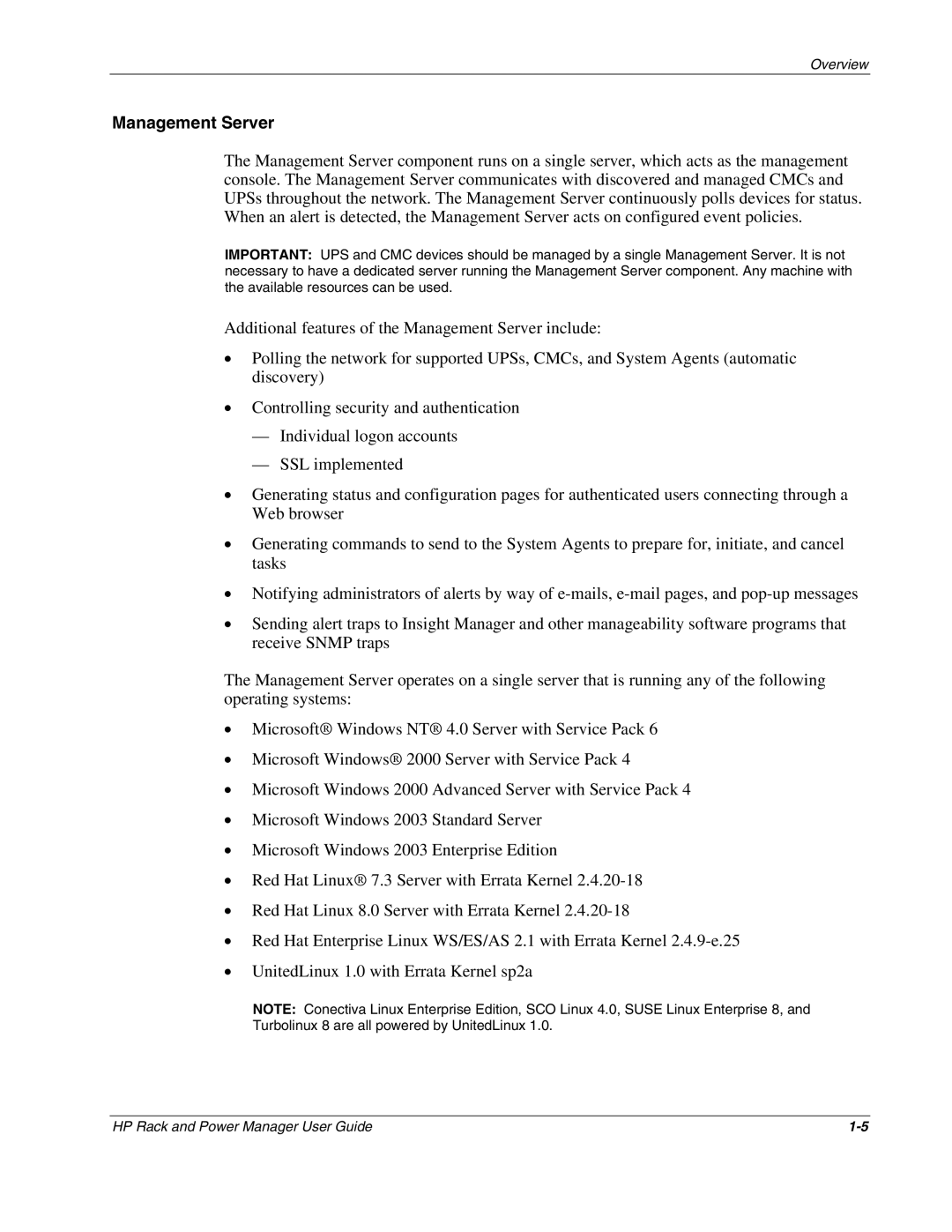
Overview
Management Server
The Management Server component runs on a single server, which acts as the management console. The Management Server communicates with discovered and managed CMCs and UPSs throughout the network. The Management Server continuously polls devices for status. When an alert is detected, the Management Server acts on configured event policies.
IMPORTANT: UPS and CMC devices should be managed by a single Management Server. It is not necessary to have a dedicated server running the Management Server component. Any machine with the available resources can be used.
Additional features of the Management Server include:
•Polling the network for supported UPSs, CMCs, and System Agents (automatic discovery)
•Controlling security and authentication
—Individual logon accounts
—SSL implemented
•Generating status and configuration pages for authenticated users connecting through a Web browser
•Generating commands to send to the System Agents to prepare for, initiate, and cancel tasks
•Notifying administrators of alerts by way of
•Sending alert traps to Insight Manager and other manageability software programs that receive SNMP traps
The Management Server operates on a single server that is running any of the following operating systems:
•Microsoft® Windows NT® 4.0 Server with Service Pack 6
•Microsoft Windows® 2000 Server with Service Pack 4
•Microsoft Windows 2000 Advanced Server with Service Pack 4
•Microsoft Windows 2003 Standard Server
•Microsoft Windows 2003 Enterprise Edition
•Red Hat Linux® 7.3 Server with Errata Kernel
•Red Hat Linux 8.0 Server with Errata Kernel
•Red Hat Enterprise Linux WS/ES/AS 2.1 with Errata Kernel
•UnitedLinux 1.0 with Errata Kernel sp2a
NOTE: Conectiva Linux Enterprise Edition, SCO Linux 4.0, SUSE Linux Enterprise 8, and
Turbolinux 8 are all powered by UnitedLinux 1.0.
HP Rack and Power Manager User Guide |
